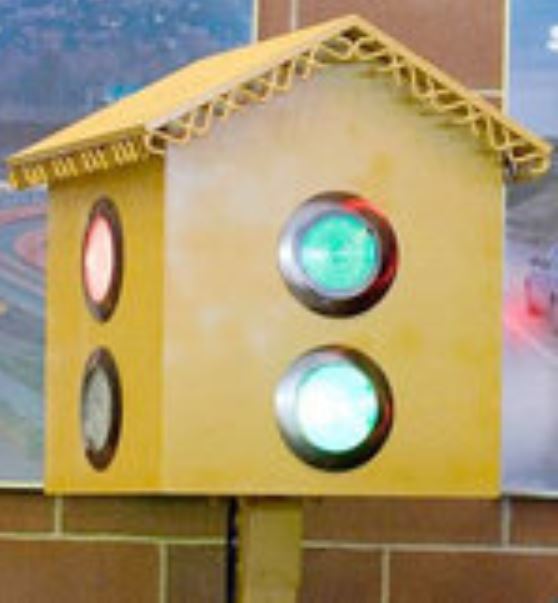June 4, 2019
2019 marks the 105th anniversary of the electric traffic signal, so let’s travel back in time to the very first signal system” – which takes us to 1868.
 That’s the year the first traffic light was unveiled in London outside the Houses of Parliament, in response to the utter chaos occurring on streets from competing modes of transportation and directions of travel. This traffic light was gas-powered and human-operated: the signal needed to be manually controlled by a police officer who would raise or lower the semaphore arms, signaling drivers whether they should proceed or stop.
That’s the year the first traffic light was unveiled in London outside the Houses of Parliament, in response to the utter chaos occurring on streets from competing modes of transportation and directions of travel. This traffic light was gas-powered and human-operated: the signal needed to be manually controlled by a police officer who would raise or lower the semaphore arms, signaling drivers whether they should proceed or stop.
Not only were these gas-powered lights dangerous for police officers and motorists – for example, a leak in a gas line once caused a signal to explode and seriously injured the police officer operating the lights – but a contrast between modern traffic signal systems and a human directing traffic shows that human direction makes traffic move more slowly.
 A police officer named Lester Wire came up with the idea that revolutionized traffic engineering in 1914: the electric traffic light, installed in Cleveland, Ohio at the corner of East 105th Street and Euclid Avenue. It was shaped like a birdhouse and had just green and red lights, with a buzzer that indicated when the light was about to change.
A police officer named Lester Wire came up with the idea that revolutionized traffic engineering in 1914: the electric traffic light, installed in Cleveland, Ohio at the corner of East 105th Street and Euclid Avenue. It was shaped like a birdhouse and had just green and red lights, with a buzzer that indicated when the light was about to change.
In 1923, inventor Garrett Morgan patented the three-position traffic signal, which is where we get today’s yellow light. He later sold the patent to General Electric.
For years, traffic lights changed at set intervals. The problem, of course, is not all streets experience the same traffic flow, and a time-based system will keep vehicles waiting unnecessarily. An inventor named Charles Adler Jr. came up with the idea to mount a microphone on the pole of the signal so the light would change when a driver honked the vehicle horn. Although signals today do not change from drivers honking (thankfully), those principles are still in place, as traffic lights change through detection of cars rather than set time intervals.
The 1960s saw the computerization of traffic lights. In addition to improving the flow, efficiency and safety of traffic, computerized signal systems also allowed people to move to suburban areas because improved traffic control led to faster commute times for those who drove into downtown areas to work.
Today, we have smarter signal control that adapts to traffic and can prioritize movements or vehicles on the roadway, such as fire trucks, ambulances or even trucks and buses through freight and transit signal priority (TSP). These smarter modern traffic signal systems offer huge benefits at a much lower cost when compared to widening roadways to achieve the goal of easing traffic congestion and improving safety.
 Adaptive traffic signal control and signal priority are part of what we call an intelligent transportation system (ITS). ITS technologies “read” transportation networks in real time and communicate with vehicles and infrastructure to improve a network’s productivity.
Adaptive traffic signal control and signal priority are part of what we call an intelligent transportation system (ITS). ITS technologies “read” transportation networks in real time and communicate with vehicles and infrastructure to improve a network’s productivity.
The US Department of Transportation’s 2015-2019 ITS Strategic Plan categorizes ITS programs into six categories: connected vehicles, automation, emerging capabilities, enterprise data, interoperability, and accelerating deployment. Progress in each of these categories allows us to optimize our transportation systems even more, and move traffic through more safely and efficiently, improving the quality of life of all travelers.
We can’t forget, however, that ITS began with a birdhouse, two lights, and a buzzer – a setup that was pretty ingenious at the time, and set the stage for a new way of organizing the complex interactions of a transportation network.
